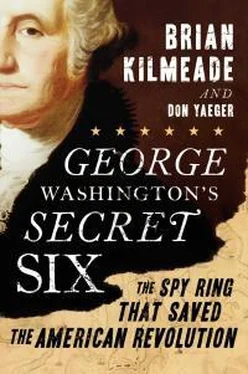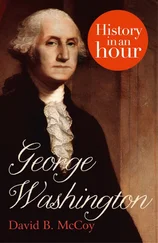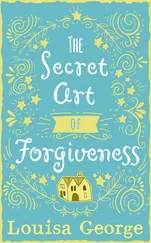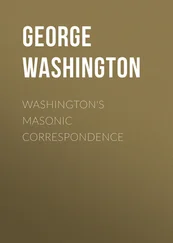There are no statues of these brave souls, whose feats should earn them a place of honor alongside the heroes of the Revolution. It is our sincerest hope that Robert Townsend, Abraham Woodhull, Caleb Brewster, Austin Roe, James Rivington, and Agent 355 will be given their rightful place in American history. Their extraordinary heroism and patriotism, unknown to their contemporaries, should not be forgotten. George Washington wouldn’t have wanted it any other way—after all, he preserved their letters among his belongings, and it is because of him that we know their story.
The secret six’s intelligence route allowed them to transmit top-secret information from Manhattan through enemy territory to George Washington in about two weeks.
Benjamin Tallmadge, who fought side by side with George Washington, was tasked with forming the Culper Ring. His leadership and knowledge of Long Island made him indispensable.
Collection of the Litchfield Historical Society, Litchfield, Connecticut, a gratis copy of the work deposited in the society’s library
Robert Townsend did not have the bravado of his older brother or his father, but his quieter heroic qualities made him the perfect spy leader—Culper Junior. True to his unassuming character, he seems never to have commissioned a painting of himself. This one rough sketch depicting him in his forties is known.
Courtesy of the Friends of Raynham Hall, Inc.
James Rivington was the respected publisher of the Rivington Gazette, a loyalist newspaper. What the British didn’t know was that he was also a spy for George Washington. With the help of Robert Townsend, he interviewed British officers about their military exploits and took their inside intelligence directly to Washington. Rivington’s biggest contribution was acquiring the redcoats’ battle plan for Yorktown. The colonists would beat Lord Cornwallis in that battle and win the war in the process.
Collection of the New-York Historical Society
Austin Roe’s tavern still stands today, though it was moved from its original location. From here, Roe made the fifty-five-mile journey to Manhattan, passing through occupied Manhattan and Long Island to reach Robert Townsend.
Courtesy Kurt Knapp Photography
The first man to sign on to the spying mission was Abraham Woodhull, known as Culper Senior. His detailed logbook enabled historians to put together many of his movements during the ring’s years of operation. (Woodhull never wanted to be paid for spying but did want to be reimbursed for his expenses, one of the reasons his log entries were so detailed and accurate.) After the war, he became a respected judge but never spoke about his days in the Culper Ring. No portrait of Abraham Woodhull exists today, but his grave reflects his eminent position as a judge and his anonymity as a spy.
Courtesy Kurt Knapp Photography
As the war heated up, the cover for the secret six grew deeper. First they used invisible ink, then code numbers, and finally they used both, writing in invisible ink between the lines in books using the code number system. This page from one of the few codebooks invented by and issued to the secret six demonstrates how the spies replaced places and people with numbers.
Courtesy of Library of Congress, Manuscript Division
Robert Townsend’s business, Templeton & Stewart, was just a few blocks from Rivington’s Gazette office, with the Long Island ferry dock located conveniently between the two.
Courtesy of Library of Congress, Manuscript Division
Major John André, a charismatic ladies’ man, ran a British spy ring and ultimately lost his life because of it. After his capture, he tried to negotiate a prisoner swap for himself, but General Washington had only one deal in mind: a swap of André for Benedict Arnold. After that was rejected, André was hanged on October 2, 1780.
Collection of the New-York Historical Society
Benedict Arnold is known for being a traitor but before that was best characterized as a respected battlefield general. His expectation that the colonists would lose the war and his bitterness over his belief that Congress owed him money together prompted him to secretly join the British. Had he succeeded in handing over West Point to the redcoats, Washington would have lost the Hudson River and most certainly the war. The Culpers tipped off Washington to Arnold’s traitorous ways and thwarted the plot.
Collection of the New-York Historical Society
In addition to West Point, Arnold hoped to deliver George Washington into British hands as well. He sent important intelligence back to Manhattan with Major John André, who was code named John Anderson. The note shown here ultimately cost André his life when Patriots intercepted him and found it in his boot. André himself later drew the self-portrait below the note on the day before his execution.
Collection of the New-York Historical Society
In 1783, George Washington and his army returned to New York City in victory. He would return as president seven years later and would govern the country from Manhattan. Major Tallmadge asked the general to delay his entry so that he could secure members of the ring, because many thought they were loyal to the king and they could be harmed unless protected.
Collection of the New-York Historical Society
Robert Townsend’s grave, located on the edge of the Townsend family burial site up against a fence, is startlingly nondescript. Townsend wouldn’t have wanted it any other way: an unassuming man, he lived and died without revealing his key role as one of George Washington’s most successful and essential spies.
Courtesy Kurt Knapp Photography
ACKNOWLEDGMENTS
There are so many great people responsible for the completion of this book. I urge you to read what follows and take note of them all. First, I must thank my longtime friend Bruce Stegner, whom I informed of this ring in 1988; he held on to the concept and has relentlessly researched the secret six ever since, unwavering in the belief that this story just had to be told to a larger audience. And thanks to our respective families—Renee, Rebecca, Olivia, and Julia Stegner; my wife, Dawn, Bryan, Kirstyn, and Kaitlyn Kilmeade; and Jeanette, Will, and Madeleine Yaeger—for indulging our excitement about the story and mirroring our enthusiasm as every aspect of the ring was brought to light and life.
Thanks to the brilliant Tiffany Yecke Brooks, without whom we could not have researched and written this project. Tiffany has worked with Don for years but absolutely fell into her sweet spot on this book, because it combined her passion for historical research with creative writing. She kept both of us on task.
Roger Ailes, who allows me to work at the most patriotic company in America, is due a tremendous amount of thanks. He underlined the need for all of us to know our history and recognize the incredible bravery and selflessness of the first generations of Americans, which are demonstrated in the story of the six brave individuals who made up America’s first spy ring.
Of course, this book could not have been written without the guidance of all-star Fox VP Bill Shine, a Long Islander who is endlessly supportive and understands the significance of the story because it happened in his backyard. We also owe a salute to Diane Brandi, who was the first to hear the book pitch; without her guidance and support the project would never gotten done.
I must also salute my Fox & Friends cohosts, Steve Doocy, Gretchen Carlson, and Alisyn Camerota, who have heard me talk about this story for years and could not have been more supportive. Thanks for stepping up to help me during her free time go to Alyson Mansfield, executive producer of Kilmeade & Friends. I also can’t say enough for the producing team on Fox & Friends, led by Lauren Petterson and Jennifer Rauchet, for their faith in the project before they read even a word on paper.
Читать дальше












